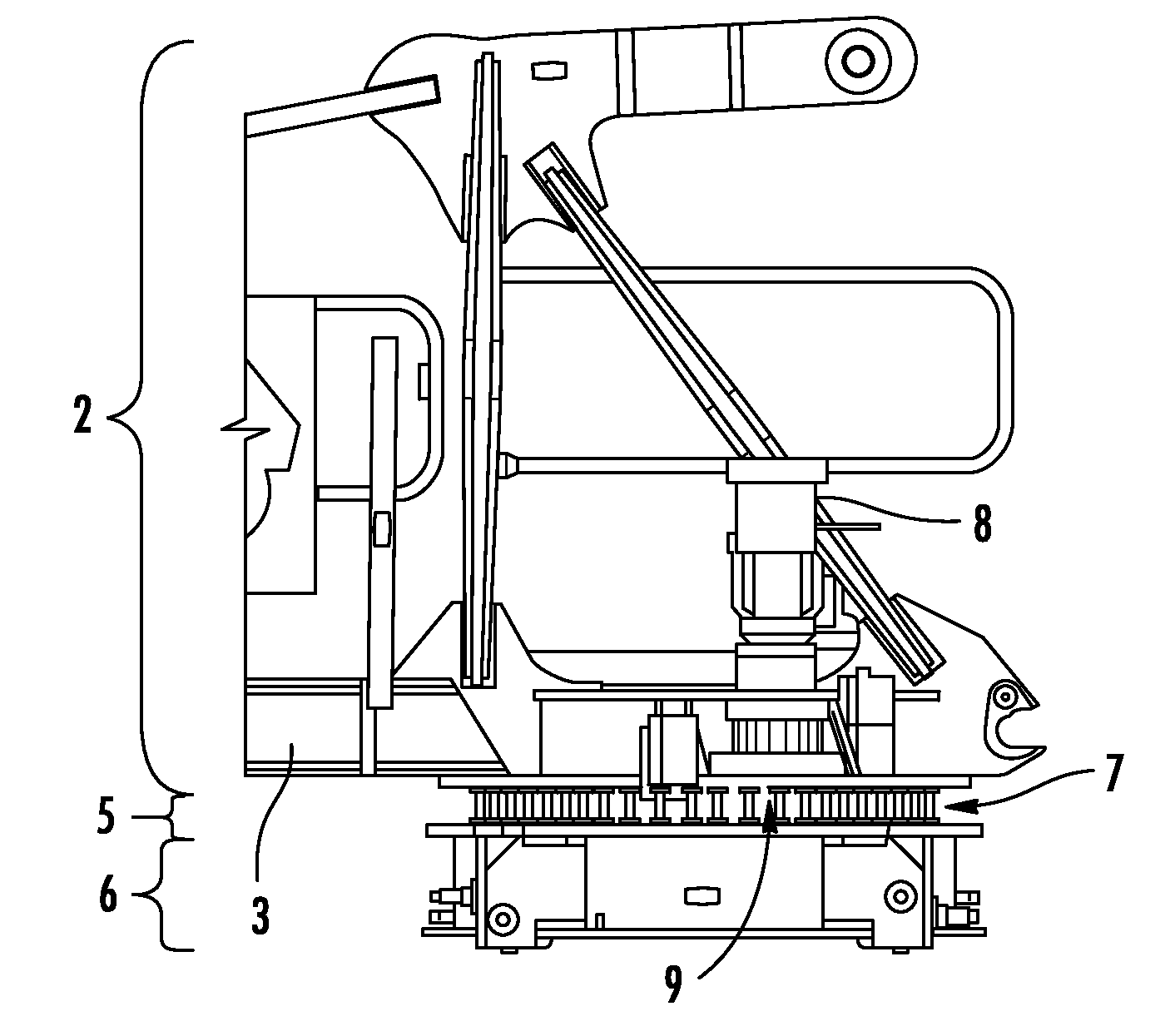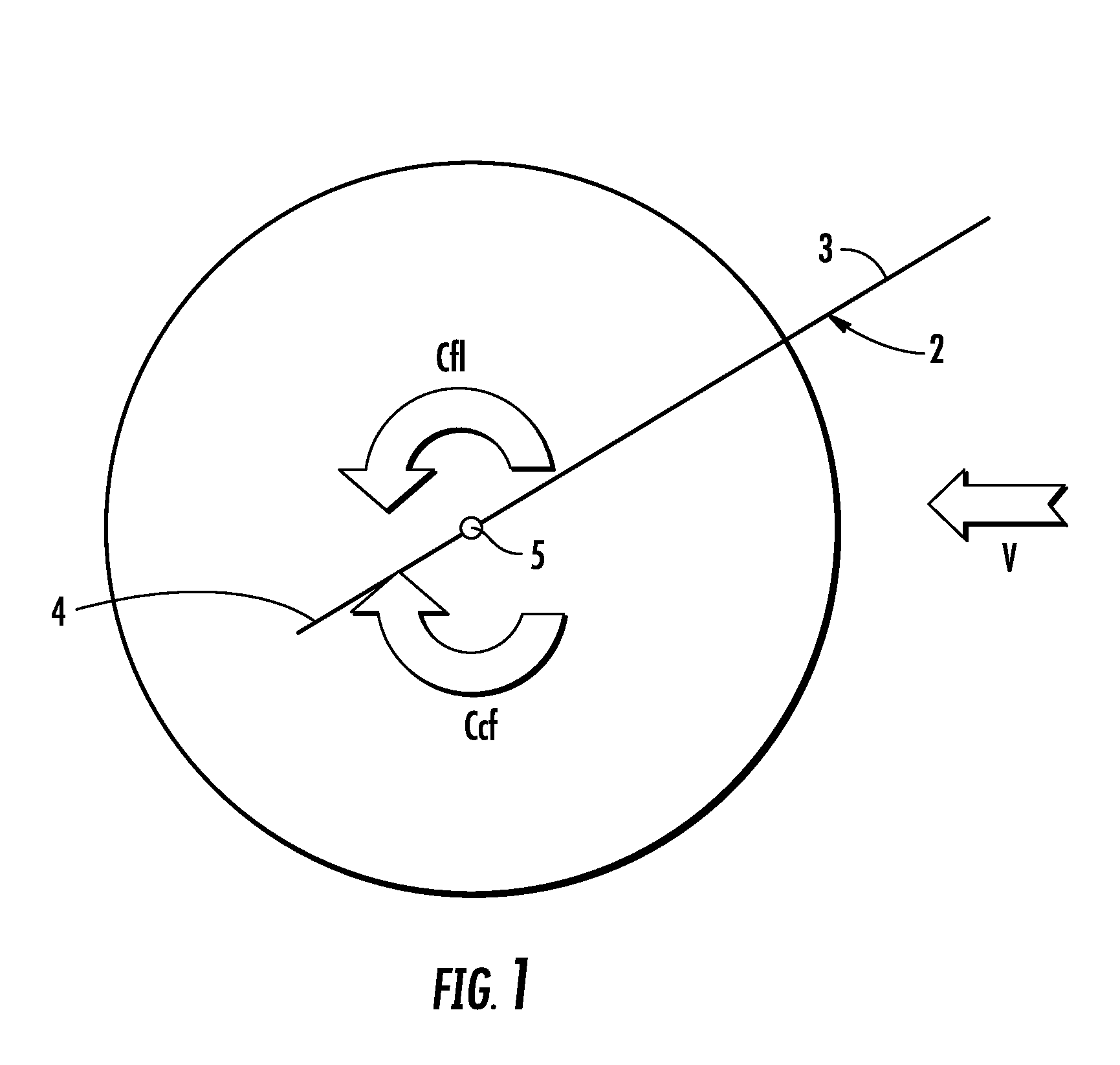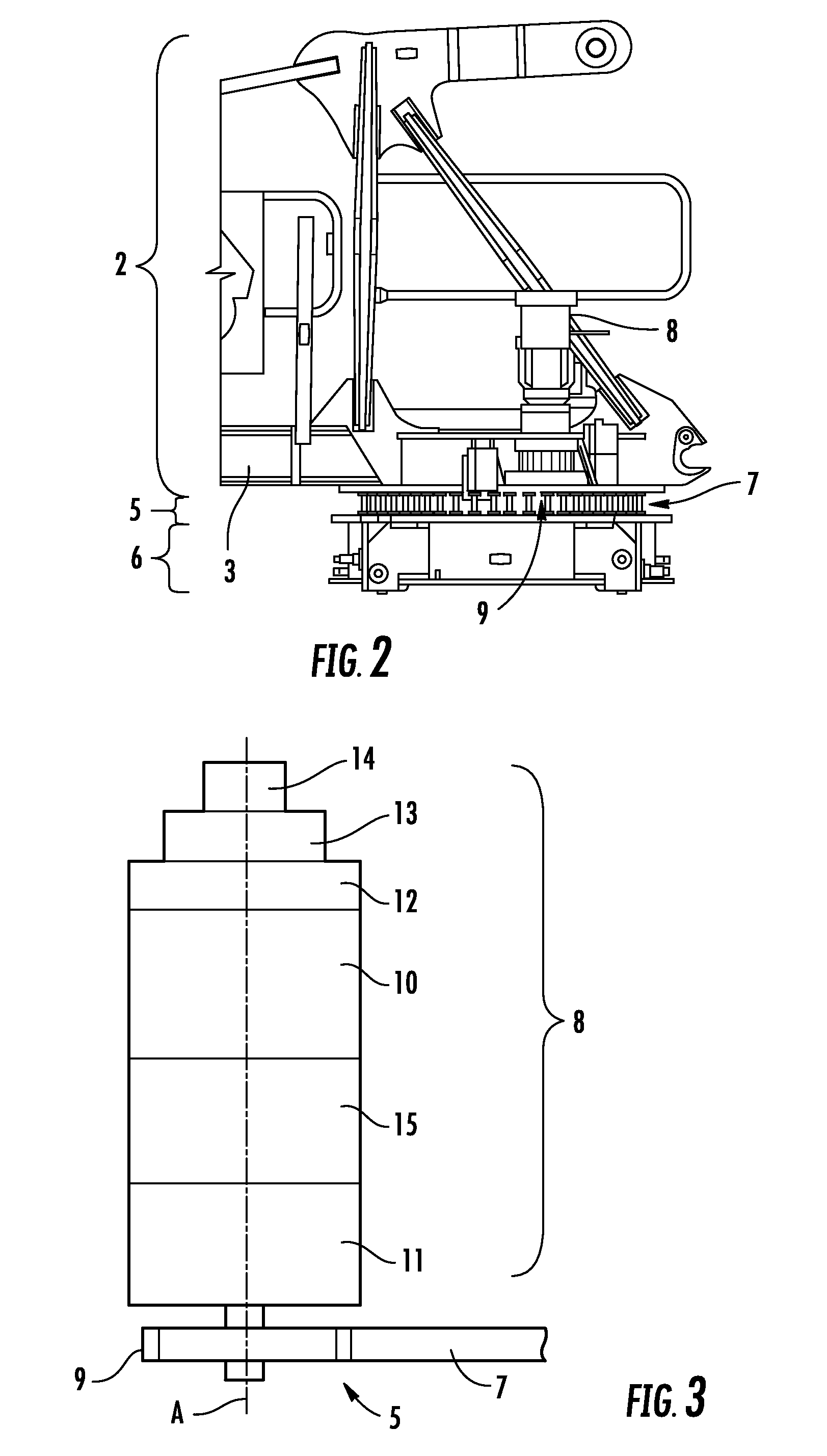Device for placing a tower crane in weathervaning mode
a technology for tower cranes and weathervanes, applied in the direction of cranes, etc., can solve the problems of uncontrollable rotation of the rotating part, inability to weathervane correctly, and risk of cranes falling off, and achieve the effect of adjusting the braking torque and being easy to transpos
- Summary
- Abstract
- Description
- Claims
- Application Information
AI Technical Summary
Benefits of technology
Problems solved by technology
Method used
Image
Examples
Embodiment Construction
[0023]Referring to FIGS. 1 and 2, the rotating part 2 of a tower crane is composed of a jib 3 and of a counterjib 4, which are aligned on either side of a slewing ring bearing 5 of vertical axis which is mounted on the top 6 of the mast (not shown itself) of the crane. The slewing ring bearing 5 is itself composed of two rings, namely a fixed ring connected to the top 6 of the mast and a movable ring connected to the rotating part 2, the fixed ring externally forming a toothed wheel 7. A geared motor unit 8, which is secured to the rotating part 2, is coupled to a pinion 9, of vertical axis A, which engages with the toothed wheel 7—see also FIG. 3.
[0024]In a known manner, as shown in FIG. 3, the geared motor unit 8 comprises an electric motor 10, a reduction gearset 11 and an internal main brake 12, here placed above the motor 10. Provided above the main brake 12 is a weathervaning device 13, itself surmounted by an encoder 14. The weathervaning device 13 makes it possible to mechan...
PUM
 Login to View More
Login to View More Abstract
Description
Claims
Application Information
 Login to View More
Login to View More - R&D
- Intellectual Property
- Life Sciences
- Materials
- Tech Scout
- Unparalleled Data Quality
- Higher Quality Content
- 60% Fewer Hallucinations
Browse by: Latest US Patents, China's latest patents, Technical Efficacy Thesaurus, Application Domain, Technology Topic, Popular Technical Reports.
© 2025 PatSnap. All rights reserved.Legal|Privacy policy|Modern Slavery Act Transparency Statement|Sitemap|About US| Contact US: help@patsnap.com



